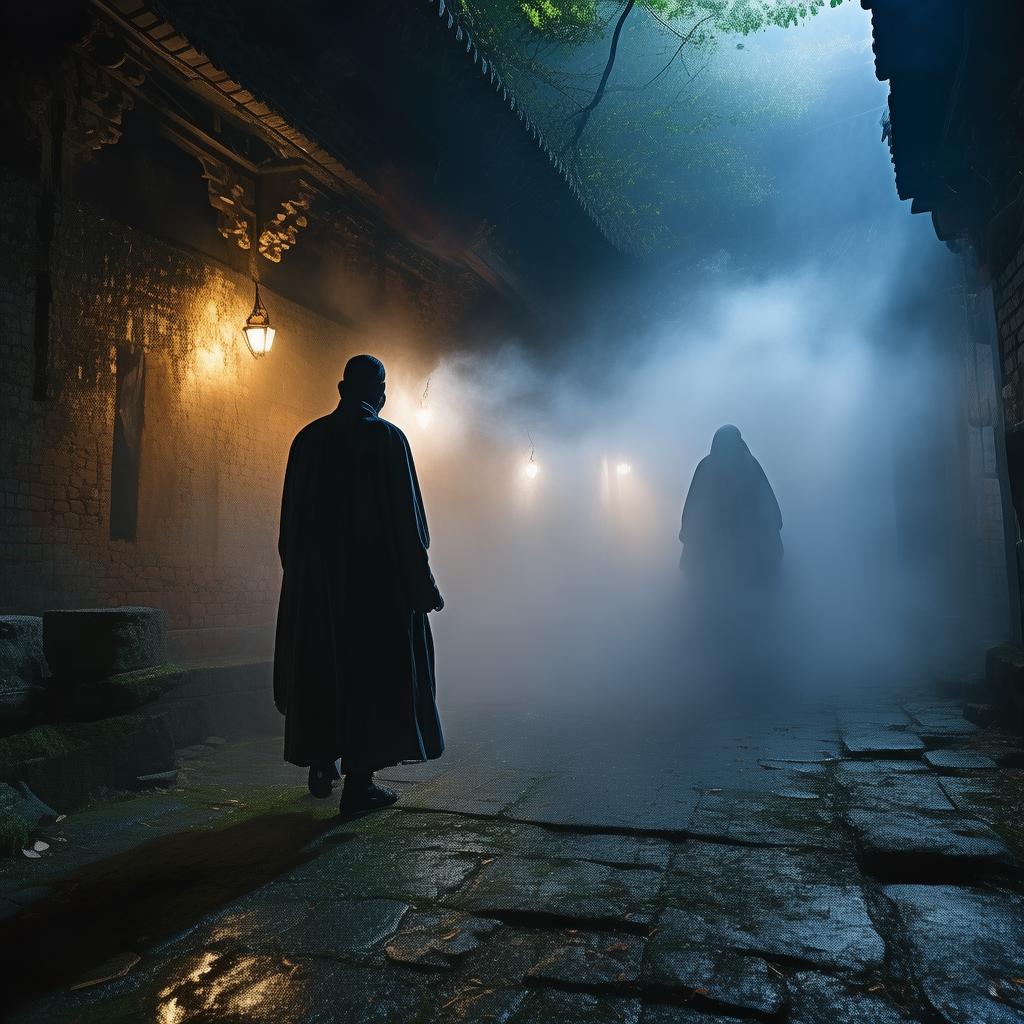The Wig That Haunted the Ruins: A Theatrical Tragedy
The dimly lit theater echoed with the hushed whispers of an audience engrossed in a play, a performance steeped in the tragedy of Shakespearean proportions. On stage, the protagonist, Eliza, was ensnared by the supernatural allure of a mysterious wig. As she adorned the wig, she felt an unshakable connection to a past she could barely fathom. The play was a modern adaptation of "Hamlet," and the wig was said to have been worn by a renowned actress centuries before, during a production that met a tragic end.
Offstage, amidst the labyrinth of backstage corridors, stood an elderly man named Mr. Penrose, the reclusive owner of an antiques shop that held the secrets of many a haunted relic. His eyes, like deep wells of forgotten memories, glided over the wig now perched upon Eliza's head. There was something about the wig that resonated with him, something that seemed to pull at the strings of his long-ago past.
The following day, as Eliza practiced her lines in a dimly lit rehearsal room, the wig seemed to have taken on a life of its own. It seemed to whisper secrets of the dead, of a love affair that had turned tragic in the ruins of an ancient castle. Eliza was consumed by the stories it told, and the weight of its past was beginning to take its toll on her mind.
Mr. Penrose, intrigued by the tales Eliza shared, decided to pay her a visit. The two of them, amidst the cluttered shop filled with dusty antiques and cryptic artifacts, delved into the history of the wig. They discovered that it was last worn by a actress named Isabella in the 17th century. Isabella, it seemed, had been driven mad by the ghost of her lover, a man who had been falsely accused of a crime. Her final moments were spent wearing the wig as she stumbled upon the ruins of a castle, her ghostly figure forever haunting the place.

As the days passed, Eliza's behavior became increasingly erratic. She spoke in riddles, her eyes often fixated on the wig as if it held the key to some great mystery. The theater crew, initially fascinated by her transformation, soon grew weary of her peculiar demeanor.
The opening night arrived, and the theater was abuzz with anticipation. Eliza, in the role of Isabella, captivated the audience with her portrayal. Yet, there was an eerie silence during the performance, a presence that seemed to hover around the stage. By the third act, as the final act of the play was unfolding, the presence became palpable.
The climax of the play was a dramatic confrontation between Isabella and her lover. As Eliza stepped forward, the wig seemed to come to life, its fibers thrashing as if in pain. In that moment, Eliza's eyes went wild, and she stumbled back, her voice slurred as she declared, "I am Isabella, and this wig has stolen my soul!"
The crew, now fully aware of the wig's sinister past, rushed forward, only to find Eliza collapsed, her body twitching in what seemed to be a seizure. They carried her offstage, and Mr. Penrose, with a heavy heart, realized the true power of the haunted relic he had kept hidden for so long.
Weeks passed, and Eliza's condition worsened. She became trapped in her own mind, her spirit ensnared by the tragic past of the wig. The theater closed its doors, and Mr. Penrose, with a heavy heart, decided to part ways with the haunted artifact.
The ruins of the ancient castle, where Isabella's ghost had taken her final breath, now lay abandoned, the echoes of her cries still reverberating in the air. Eliza's spirit was said to be forever entwined with the wig, her tragic tale etched into the annals of time.
The story of Eliza and the haunted wig spread far and wide, becoming the stuff of local legend. It was a tale of love, tragedy, and the supernatural, a haunting reminder of the delicate line between life and death, and the eternal power of memory.
As for Mr. Penrose, he closed his antiques shop and disappeared into the shadows of history. The wig, along with the ruins of the castle, became a reminder of the haunting truths that sometimes lay hidden within the walls of the past.
✨ Original Statement ✨
All articles published on this website (including but not limited to text, images, videos, and other content) are original or authorized for reposting and are protected by relevant laws. Without the explicit written permission of this website, no individual or organization may copy, modify, repost, or use the content for commercial purposes.
If you need to quote or cooperate, please contact this site for authorization. We reserve the right to pursue legal responsibility for any unauthorized use.
Hereby declared.









